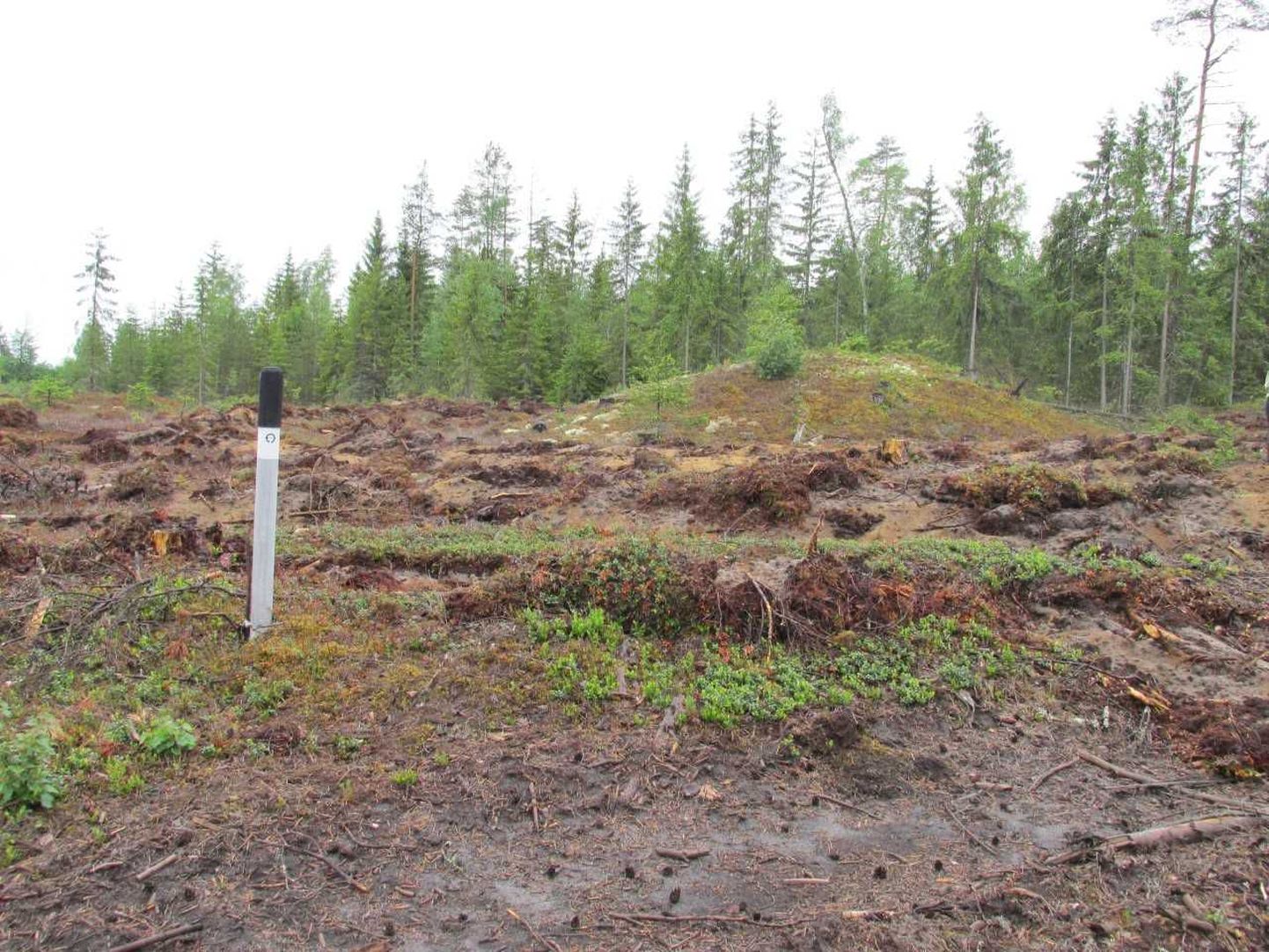
Loggers in Võru county damaged ancient grave sites and dug out human remains, inspectors of the National Heritage Board recently discovered. The owner of the land plot, the forestry form AS Dammix, promises to liquidate the damage caused.

Loggers in Võru county damaged ancient grave sites and dug out human remains, inspectors of the National Heritage Board recently discovered. The owner of the land plot, the forestry form AS Dammix, promises to liquidate the damage caused.
Precise age of the human bones unearthed in Paidra village, Lasva municipality, cannot be stated since they have not been studied closely enough, but it can be presumed that they date back to the second half of the first millennium, said Mirja Ots, senior inspector of the National Heritage Board. There are 13 protected burial sites in the Dammix land plot near Võhandu River. These look like low sand hills, mostly round, one elongated.
The inspectors Mirja Ots and Anu Kivirüüt discovered in June that three graves had been damaged. One had two furrows plowed in it approximately 30 centimeters deep, which revealed fragments of burnt human bones.
More bones can be seen at the a site on northeastern side of another grave. But the inspectors do not know whether these came from the grave or the cremation site between the graves, since the damage to ground does not enable ascertaining it.
The surface of the third grave site has not been plowed up, but deep ruts give reason to suspect that heavy vehicles have been driven over it. The protection zone around the grave is rutted as well.
AS Dammix, the owner of the largely wooded area, is engaged among other activities, in purchasing forest plots and growing forest. The National Heritage Board gave the firm permission to log trees around the grave sites in spring 2015, but specified its terms.
It is forbidden to use heavy equipment on the grave hillocks and in the immediate vicinity (within five meters) – this means that trees have to be cut with chainsaws. Moreover, it is forbidden to mineralize the ground or to plow furrows in it.
Kersti Siim, the Võru county senior inspector at that time, visited the site with the owner's representative and marked it down one day after the logging permit had been granted.
According to Mirja Ots, the graves are so remarkable that anyone should be able to notice them, even without the warning stakes designating national heritage sites.
«Since the owner of the property was aware of the National Heritage Board requirements concerning logging near the graves, it is a case of deliberate damaging of cultural heritage,» the inspectors Ots and Kivirüüt wrote in their report.
Kivirüüt, senior inspector of Tartu county, said that they have to notify the police in such cases and that is what they did. The criminal investigation will show what will be done with the damaged graves, she added.
Ots hopes that they will reach an agreement with the owner about restoring the site.
The National Heritage Board has discussed it with the company's representatives and they seem to be cooperative; the damage to the graves had been caused by confusion in assigning tasks. The enterprise has announced its willingness to compensate for the damage.
Anu Oinberg, head of Dammix, told Postimees that their workers did not cut the trees near the graves as the firm had outsourced the logging and earth handling and therefore they would not like to comment further. She added that the company accepts responsibility for the incident and will do everything they can to restore the site according to the National Heritage Board requirement.
According to Jelena Filipova, press official of Viru district prosecutor's office, a criminal investigation concerning damage to cultural heritage and destruction of the same has been started and it is in the initial stage.
The penal code stipulates one to five years in prison for such an act unless a legal person is guilty.
Ots said that the bone fragments discovered in the top layers had been taken to the National Heritage Board office, while archaeological rescue digging will be undertaken after the end of the investigation and the bones would be taken to the archaeological collections of Tartu or Tallinn universities.